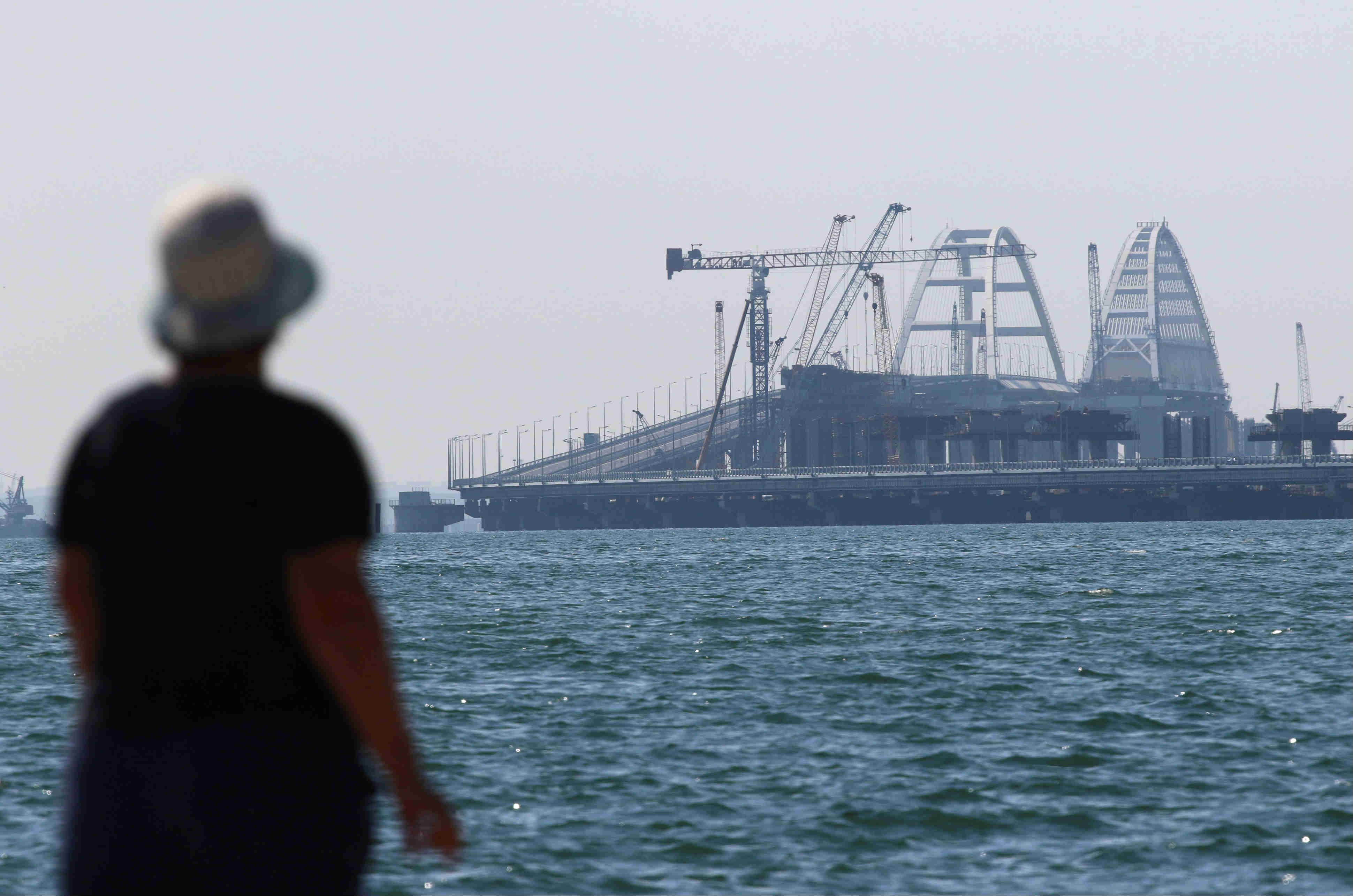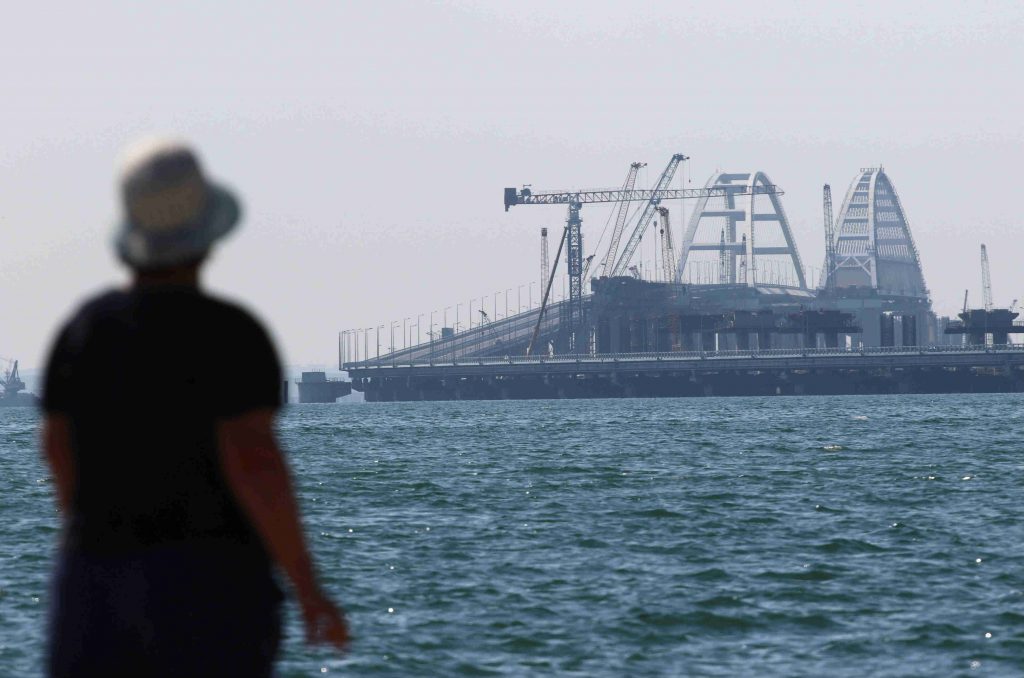 In response to Russia’s aggressive actions in the Sea of Azov, Ukraine has gone on high alert to boost its coastal defense positions and build up its naval presence.
In response to Russia’s aggressive actions in the Sea of Azov, Ukraine has gone on high alert to boost its coastal defense positions and build up its naval presence.
Since April 2018, under the pretext of protecting its illegally constructed Kerch Bridge and fighting what it calls Ukraine’s “state piracy,” Russia has been brazenly conducting ad hoc inspections of merchant vessels headed to and from Ukraine. The unreasonably low clearance of the bridge combined with inspection delays hurts Ukrainian ports in the Sea of Azov, already costing the economy over a billion hryvnias ($36 million). In addition, Russia has increased its military presence there to about 120 patrol boats and ships.
This has caught Ukraine off guard. The Ukrainian navy was always underfunded, and for the last four years, the government focused especially on strengthening the army. The stunning loss of Ukraine’s naval fleet during the annexation of Crimea and the lack of a marine doctrine find the navy in the worst possible shape just when her country needs her most. The new threat from the sea, however, requires a different approach.
Given Russia’s absolute advantage in the Sea of Azov, scarce time, and limited resources, Ukraine is building a Mosquito Fleet by 2020, composed of thirty high-speed patrol and combat craft. This is believed to be more effective and less costly than repairing older ships or constructing large vessels.
Although Ukraine’s naval forces do not pose a threat to Russia, Ukraine has managed to build a strong coastal defense along the Sea of Azov, capable of repelling a potential Russian amphibious operation. Ukraine’s joint forces conduct frequent military exercises to highlight Ukraine’s capabilities and resolve. This seems to have reduced Russia’s lengthy detentions as recently noted by experts and the military.
The irony is that Russia’s actions aren’t technically illegal according to the 2003 agreement on the shared use of the Sea of Azov and the Kerch Strait, and the 1993 agreement on fishing quotas. Since the sea is defined as shared internal waters with no defined border, Russia is free to navigate near the Ukrainian coast without violating international law. In the midst of war, while Russia and Ukraine surprisingly continued to quietly negotiate fishing quotas, Russia’s catch doubled at the expense of Ukraine’s Crimean quotas.
The 2003 agreement was signed under pressure to block Russia’s claim to Tuzla Island in the Kerch Strait. Ukraine was able to stop Russia’s construction of an embankment to Tuzla by demonstrating a military presence, but it lost politically as it had to make bitter concessions regarding the Sea of Azov.
The questions of whether the UN Convention on the Law of the Sea applies in the Sea of Azov, and what should be done about the 2003 agreement have set off a fierce debate in Kyiv. Many think that since international maritime law doesn’t apply, the bilateral agreement should be abrogated and the sea status changed from internal waters to territorial. This would provide a legal basis to appeal Russia’s violations of navigation to the West as well as to invite NATO partners for joint exercises, which Ukraine otherwise can’t do without Russia’s consent. Some argue that Russia has already breached the agreement by constructing the Kerch Bridge, so Ukraine can declare it void and claim its twelve nautical miles of coastal waters in accordance with the UN Convention.
Ukrainian diplomats argue that the UN Convention does apply in the Sea of Azov despite the bilateral agreement and fear that a denunciation will trigger a new territorial dispute. Their logic is that since the article on the sea delimitation was never implemented, the concept of shared internal waters is inactive, and the legal status is determined per UN Convention.
George Tuka, deputy minister on issues of temporarily occupied territories, cautions that repealing the agreement will enact the UN Convention on the Law of the Sea, and Russia will also declare its twelve and twenty-four nautical mile zones along Crimea, which will bring the Kerch Strait under Russia’s full control. He believes it’s better for Ukraine to stick for now with the bilateral agreement which shares the Kerch Strait.
Ukraine does not have a unified position on this complex legal issue. The government is using the agreement to its advantage by trying to hold Russia legally accountable, while at the same time leaving room for the Ukrainian navy to maneuver.
In 2016, Ukraine filed a complaint against Russia’s violations of Ukraine’s rights under the UN Convention on the Law of the Sea to the Permanent Court of Arbitration. As expected, Russia claimed that the tribunal has no jurisdiction. The judges will take up to fifteen months to study the matter. While they are deliberating, the European Parliament recently condemned Moscow’s violations of international maritime law in the Sea of Azov and threatened new sanctions.
Without notifying Russia, the Ukraine navy used the principle of mutual freedom of navigation under the bilateral agreement to conduct an operation of strategic importance by deploying two ships through the Kerch Strait to its new naval base in Berdyansk.
Unlike in the relatively calm Black Sea where Ukraine is backed by NATO partners that deter Russia’s moves, in the Sea of Azov it finds itself alone. Ukraine cannot resolve this situation single-handedly because its forces are inferior. It needs stronger diplomatic and military support to force Russia to carefully consider the full cost of its aggressive plans. A NATO presence in the sea would seem to require the abrogation of the 2003 agreement. However you look at it, this sea agreement has trapped Ukraine with little recourse.
Vera Zimmerman, a UkraineAlert contributor, is an independent research analyst and translator.
Image: A woman looks at a bridge, which was constructed to connect the Russian mainland with the Crimean Peninsula across the Kerch Strait, on an embankment in the city of Kerch, Crimea May 16, 2018. REUTERS/Pavel Rebrov
